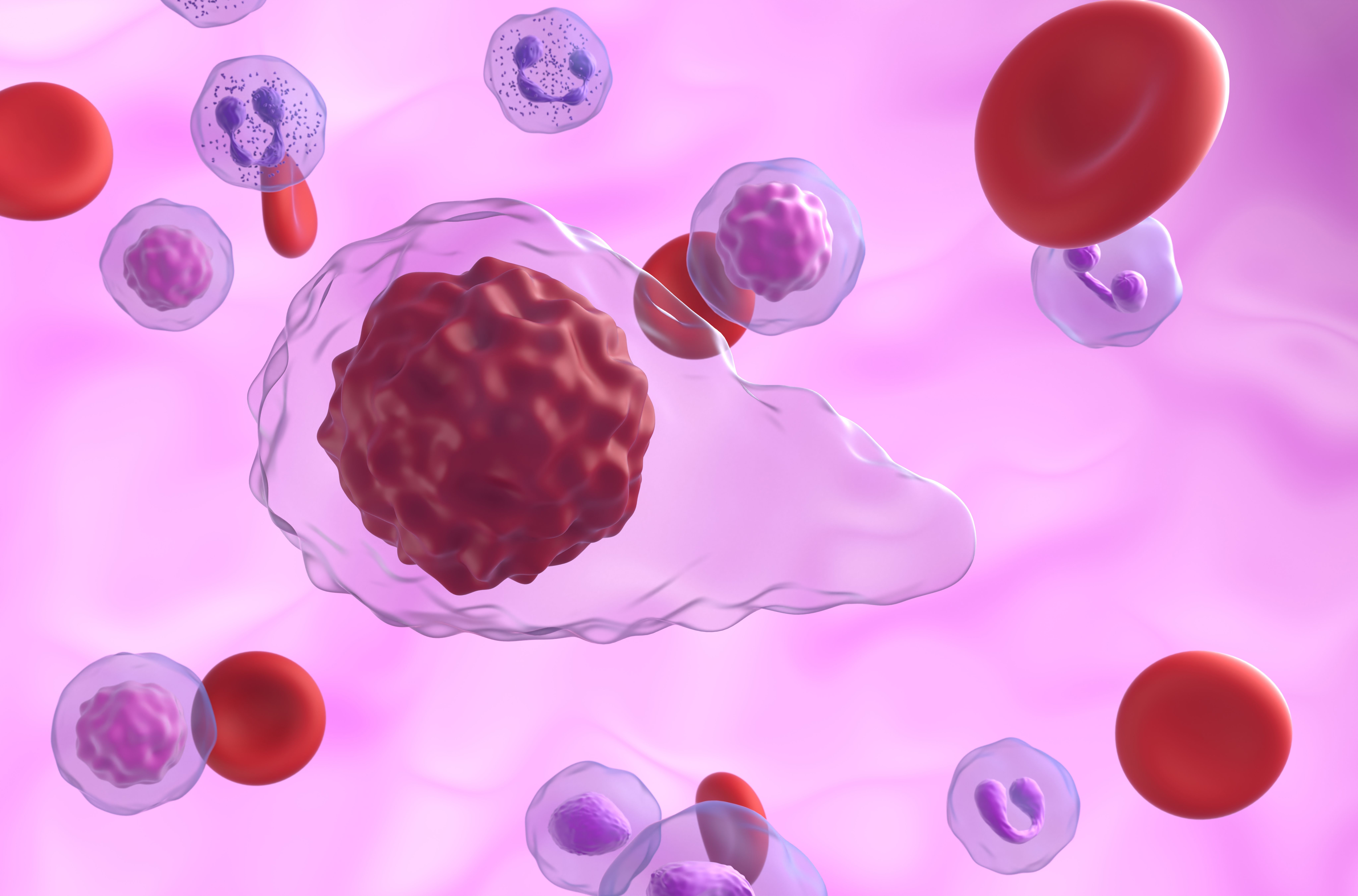In MYLOX-1 Study, GB2064 Reduces Fibrosis Grade in Myelofibrosis
Early results from the phase 2a MYLOX-1 study show a reduction of collagen fibrosis of the bone marrow in patients with myelofibrosis on the LOXL2 inhibitor GB2064.
Primary myelofibrosis (PMF) cells in blood flow - closeup view 3D illustration: © LASZLO - stock.adobe.com

In the phase 2a MYLOX-1 trial (NCT04679870), the lysyl oxidase-like 2 (LOXL2) inhibitor candidate GB2064 show promise for reducing fibrosis in patients with myelofibrosis, according to results from a planned intermediate analysis.1
In the MYLOX-1 trial, 4 of 5 currently evaluable patients with myelofibrosis given at least 6 months of GB2064 monotherapy had a 1-grade or greater, reduction in collagen fibrosis of the bone marrow.
These 4 patients also showed stable hemoglobin, white blood cell count, and thrombocyte levels, as well as a stable spleen volume over the 6-month treatment period. None of the patients required transfusion, and now 2 patients entered the extension phase of the trial due to the clinical benefit of the study drug assessed by their treating physician.
“It is wholly unprecedented and very encouraging to observe a reduction in collagen fibrosis in this patient population,” said Srdan Verstovsek, MD, a principal investigator in the MYLOX-1 trial, in a press release of the intermediate results. “It is exciting to see the first clinical validation of LOXL2 as a fibrosis target. I very much look forward to additional developments from this ongoing study in the near future.”
About the MYLOX Study
MYLOX-1 is an open-label study of 16 patients diagnosed with either progressive massive fibrosis or oral submucous fibrosis who are not taking a JAK inhibitor and likely to be refractory, intolerant, or ineligible of this type of treatment.2 All patients had to have an ECOG score of 0 to 2, be aged 18 or older at the time of enrollment, and not be positive for hepatitis or HIV.
The primary end point of the study is safety and tolerability, but a key objective is to evaluate the direct anti-fibrotic activity of GB2064 as it blocks LOXL2, which allows for repeated tissue biopsies. As a part of their intermediate analysis, investigators looked at the first 5 patients who completed at least 6 months of treatment and were able to have repeated bone marrow biopsies. In this intermediate assessment the study drug showed target engagement and penetration into the fibrotic bone marrow that gave researchers their encouraging results.
“It is exciting and encouraging to see a clear reduction in collagen fibrosis following the administration of a selective LOXL2 inhibitor in four of the five evaluable patients combined with stabilization of hematological parameters and spleen volume,” said Claire Harrison, chair of the safety review committee of the MYLOX-1 trial, in the press release. “Stable disease is excellent in a progressive disease such as myelofibrosis.”
The study has dosed all 16 patients with 1000mg of GB2064 given orally twice a day for 9 months or until discontinuation. Patients underwent bone marrow biopsies at the start of the trial and then again at 3, 6, and 9 months. According to the press release, 8 patients have either completed their treatment or continue to receive treatment while the other 8 patients either discontinued their treatment due to an adverse event (AE) or disease progression.
According to the researchers, the most common treatment-emergent AEs have been gastrointestinal related, but manageable with standard therapy. Of the 5 patients who completed at least 6 months of treatment there were no serious treatment-related AEs, and in the entire population there was only one case due to a fall.
The study is estimated to be completed by the end of 2022, but researchers on the study are already pointing to the intermediate results being a proof of concept for GB2064, strengthening their belief that it has the potential to be a disease-modifying therapy in multiple cancers related to fibrosis, they concluded.